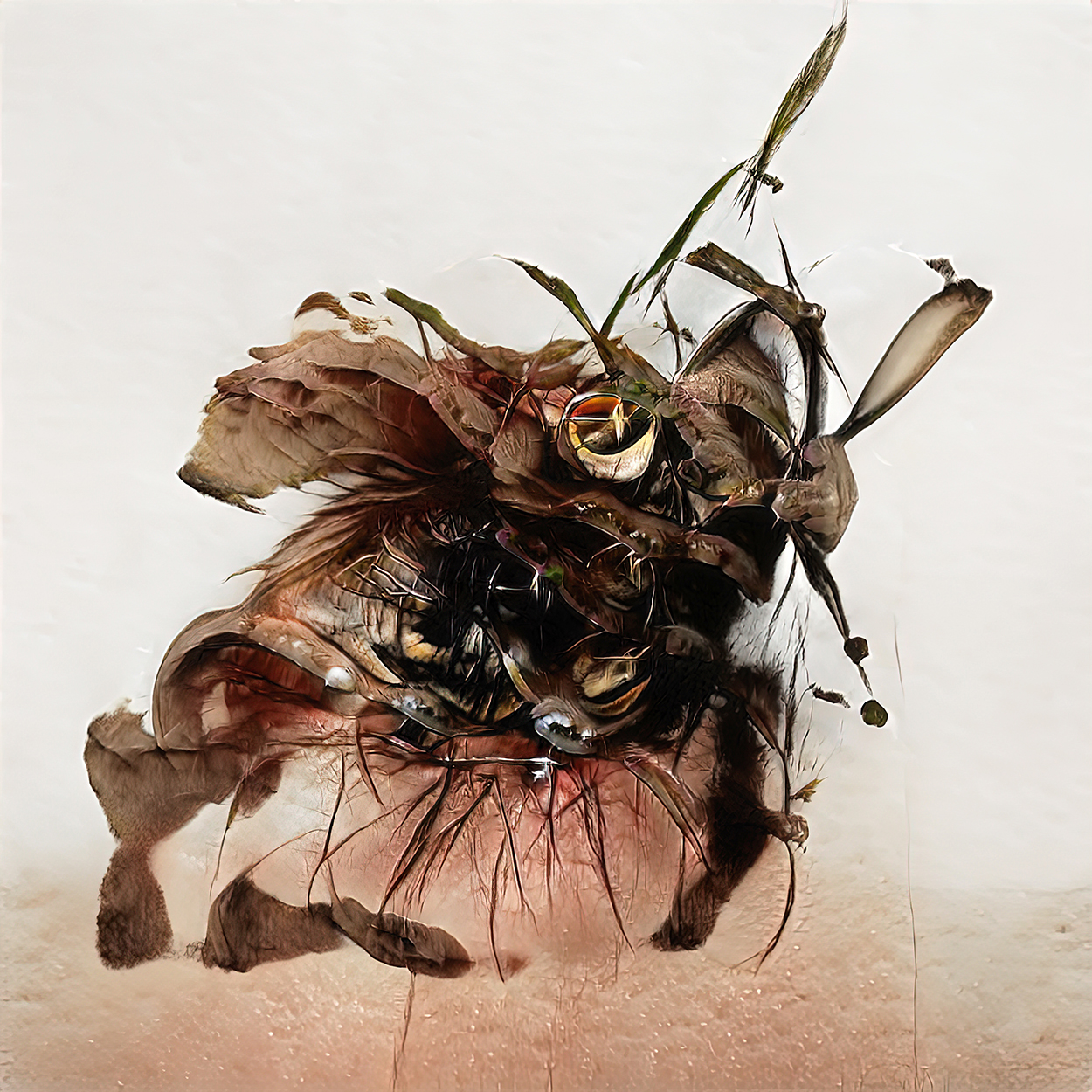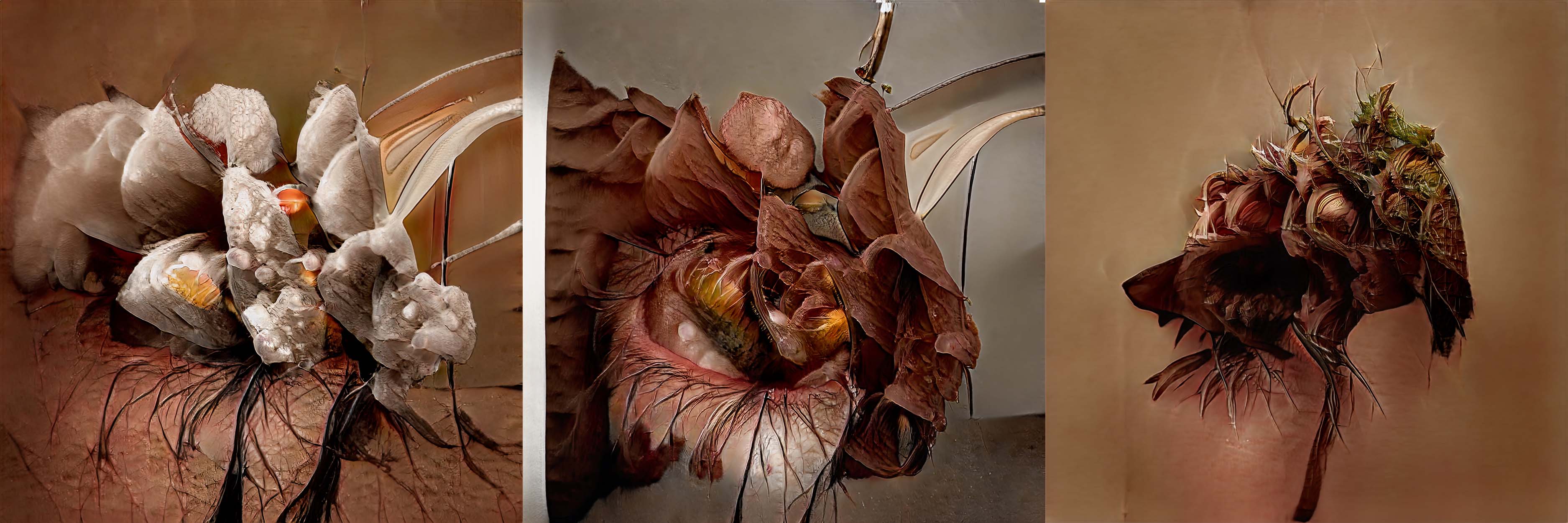Machines Are Braver Than Art
Contributor
Rendering Fiction

“The aim of literature … is the creation of a strange object covered with fur which breaks your heart.”
-Donald Barthelme
It begins like a recipe: 1 azalea bush; 1 pocket watch, gold; 1 thief, handsome; 1 chastity belt. Instructions: Place the azalea bush in a park, wind the watch and lay it and the thief under the bush, the chastity belt locked onto the thief. Put into the oven and cook at 350 degrees until golden. Mmm. I expect this will come out tasty. Toothsome, even. But what mysterious alchemy is happening in this odd kitchen? With his oh-so-clever and puckish essay on fiction and doubt entitled “Not-Knowing,”1 Donald Barthelme asks of the tableau that has just been arranged with the bush, the watch, and the thief, “What happens next?” The answer is that, of course, he does not know. This not-knowing, he continues, is “what permits art to be made.”2 It allows the mind to brood and bud and is essential for invention. It is this space of mystery that is also a place of frothy alchemical possibility, and it is the ability of language, with its “combinatory agility”3 and its “exponential generation of meaning”4 that allows the inexplicable to pool and persist long after that space has been filled—after the not-knowing has become known.
But what happens if we ask artificial intelligence to render something like a fiction? How does not-knowing, that requisite component of creativity, apply when the sought-after knowledge is without a knower?5 What if this knowledge has no body to embody? If, as William H. Gass writes, “the purpose of literature is to capture consciousness,”6 what happens when, as with artificial intelligence (AI), there is no consciousness to capture? What is it, here, that artificial intelligence doesn’t know, and what imagination can its peculiar form of not-knowing engender?
When Donald Barthelme offers us the thief, the bush, and so on, he takes them from the “world of conventional signs.”7 Now, when we read the words gold pocket watch, we can picture this in our mind’s eye. We do not hesitate to consider the characteristics or features that might distinguish one gold pocket watch from another. We are quite satisfied with the knowledge of the idea of the gold pocket watch. However, if we were to train an AI StyleGAN on pocket watches, it would readily learn how to produce an image of something we would likely identify as a pocket watch, but the AI would certainly not know it as such. Instead, the AI would look for those aesthetic features and behaviors evident in the images it is being trained with and try to reproduce them. In the case of the pocket watch: shininess, roundness, reflectivity, or little, tiny marks on something we might call its face. It would only be interested in those characteristics unique to each instance it is being trained with.

The “world of conventional signs,” from which we guilelessly borrow the azalea bush and the pocket watch from, is the world of semiotics—that world of signs, including those in language, and especially those words that are the names of things. This, the comprehension of signs and symbols, is largely what our AI does not know, and its ignorance in this regard is fantastic! Its nescience problematizes the role of signs in the construction of meaning. Because signs are isomorphic and come to resemble those things they mean, they work best when they’re uncomplicated. Rhea Meyers puts it this way: “Below a given threshold of accuracy, many minds will identifiably share a concept. Above a given level of accuracy, none will.”8 So if one were to train an AI StyleGAN concurrently on the pocket watch, the azalea bush, the thief, and his chastity belt, if it were to be familiar with the world of conventional signs, it would most certainly protest. It would immediately recognize that an azalea bush is not a chastity belt nor a thief, and that each means very different things. At this point, it should discontinue its training. Instead, it complicates things. In its attempt to know, it miscommunicates and makes ambiguous. It produces effects in excess of meaning.
In her short story, “She Unnames Them,”9 Ursula K. Le Guin’s protagonist mirrors our AI in her candid and forthright desire to re-enchant her world. Remarkably, she is able to accomplish this simply by unnaming. At the start of the story we find her asking all the world’s animals if they would like to “give back” their names. And, with few exceptions, they do so with “perfect indifference.” As the now nameless animals disperse and depart “in vast clouds and swarms of ephemeral syllables,”10 she becomes aware of new insights into them, and new sensations shared between them—sensations that jumble categories, making the hunter indistinguishable from the hunted, and attraction inseparable from fear. What she has done, in effect, is make the world wholly aesthetic. By removing the names of things, she is able to perceive the world newly unmediated by cumbersome signifiers. She cannot anymore describe the world with common nouns and instead must use gerunds: stinging, humming, flitting, blurring. The story ends with her walking away “between the dark-branched, tall dancers motionless against the winter shining.”11 The trees and moon, now unnamed, are apprehended as pure aesthetic sensation; as qualia, those internal, subjective components of perception.

The philosopher Henri Bergson, too, advocated the casting off of signs in pursuit of the “absolute.” He referred to the method required to grasp the absolute as intuition.12 Bergson’s notion of intuition stood in opposition to intellect, or analysis, which he argued accesses only that which is already known. Only the ideas, or the concepts of things, are accessible by way of the intellect through analysis. One can never know the thing itself this way. Donald Barthelme admits that one might obtain those things from his tableau and “arrange them all under glass for study.” But this, as a consequence, makes his writer merely a journalist, and the invention that arises from not-knowing is made unattainable. It is intuition that is essential if one desires knowledge of the thing itself. The method of intuition is perhaps much like that of Ursula K. Le Guin’s method of unnaming. Both gain knowledge of the world through the direct perception of aesthetic sensation—through qualia. For Bergson, entering into an object by way of intuition necessarily requires duration, or lived time. Again, verbs are “gerund-ed” into nouns, into the things themselves. Moon enchantingly becomes winter shining. Chastity belt is now pristine girding.
This is how our AI copes with the concerns of not-knowing. Just as Donald Barthelme begins with those now familiar items: bush, thief, watch, and belt, we present the same collection of things to our AI. And just as the writer finds himself, after each stab of his pen, not-knowing, so does our AI. Our AI cannot represent the world through mimesis because it does not know the names of things. It cannot comprehend the collection presented to it by way of a priori knowledge of those things. Instead, it presents its efforts as uncanny blends of palpable imagery loosed from any meaning or signification, what Surrealists agreeably called “authentic photographs of thought.” It rewrites the world into ineffable fictions with each new collection presented to it. And it remakes the world as utter optic sensations—pure aesthetics, known through intuition, fashioned without names, embracing that which is not-known.

Karel Klein is a partner at Ruy Klein in Los Angeles, California, and teaches at places like SCI-Arc, Univeristy of Pennsylvania, Washington University, and UCLA. In her work with AI, she endeavors to re-enchant the architectural body into one that foments and succumbs to sensual perception, and one that discovers new and unexpected relations to the world beyond the realm of the rational. @karelnyla
- Donald Barthelme, “Not-Knowing,” in Not Knowing: The Essays and Interviews of Donald Barthelme. Ed. Kim Herzinger. (New York: Random House, 1997). ↩︎
- Ibid., 12. ↩︎
- Ibid., 21. ↩︎
- Ibid., 21. ↩︎
- Steven Connor, “Exopistemology: On Knowing without a Knower,” (lecture, Internationales Kolleg für Kulturtechnikforschung und Medienphilosophie (IKKM), Weimar, May 23, 2018). ↩︎
- William H. Gass, “The Book as Container of Consciousness.” in Finding a Form. (Ithaca: Cornell University Press, 1997). ↩︎
- Donald Barthelme, “Not-Knowing,” in Not Knowing: The Essays and Interviews of Donald Barthelme. Ed. Kim Herzinger. (New York: Random House, 1997), 11. ↩︎
- Rhea Meyers, “Aesthetic Semiotics.” May 9, 2004. https://robmyers.org/2004/05/09/aesthetic-semiotics/. ↩︎
- Ursula K. Le Guin, “She Unnames Them,” The New Yorker (January 21, 1985): 27. ↩︎
- Ibid., 27 ↩︎
- Ibid., 27 ↩︎
- Henri Bergson, An Introduction to Metaphysics, (New York: G.P Putnam’s Sons, 1912). ↩︎